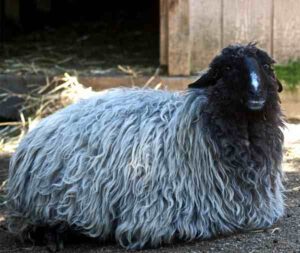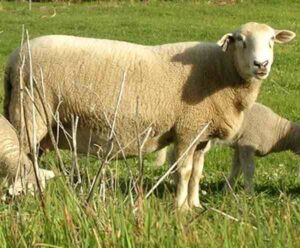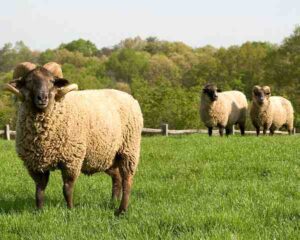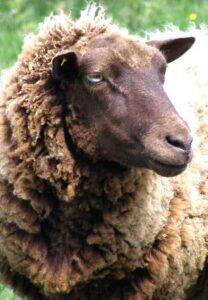The Swaledale sheep is a breed of domestic sheep from United Kingdom. It was named after the Yorkshire valley of Swaledale in England.
The breed is found throughout the more mountainous areas of United Kingdom. But is is particularly found in the Yorkshire Dales, County Durham and around the Pennine fells of Cumbria.
The breed is noted for it’s off-white wool, curled horns and white around their nose and eyes. Currently the breed is used mainly for the production of lamb/mutton.
As a breed, the Swaledale sheep is related to Scottish Blackface and Rough Fell sheep. Both of these breeds are predominant in upland locations in the United Kingdom and they are noted for their ability to thrive in exposed locations.
The Scottish Blackface and Rough Fell emerged as distinct sheep breeds, before the Swaledale. Together with the Rough Fell, Herdwick, and Dalesbred sheep, they are one of the three variations associated with the English Lake District.
Exact origins of the Swaledale sheep are unknown. But the breed probably has a non-indigenous and exotic ancestor.
An association for the breed named as ‘The Swaledale Sheep Breeders Association‘ was founded in 1919. And the association is an active organization point for Swaledale sales, shows, breeding and products.[1]
However, currently there are approximately 1200 flocks of pedigree Swaledale sheep in the United Kingdom. Read some more information about this breed below.
Swaledale Sheep Characteristics
The Swaledale sheep are a medium to large sized breed with beautiful appearance. They are thick coated, able bodied and bold.
They are actually of a medium build animal with black faces marked with bright white around the nose and eyes. Both rams and ewes have horns. And their horns are curled, and the horns of the rams are much larger.
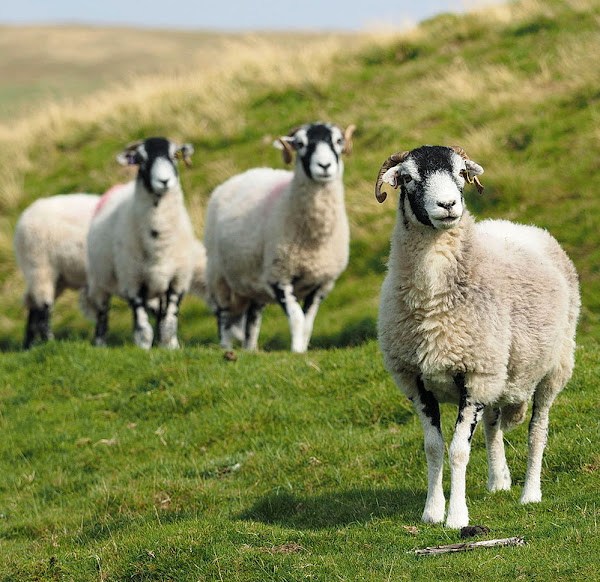
Coats of the Swaledale sheep are thick and very coarse. Their coat color is considered a uniform white or off-white. Average live body weight of the mature Swaledale sheep is around 100 kg.
Uses
Swaledale sheep is a dual-purpose animal. It is raised for both meat and wool production.
Special Notes
The Swaledale sheep are very hardy and strong animals. The ewes make excellent mothers and known for being able to rear lambs well, even in adverse conditions.
Today the breed is raised mainly for meat production, and also good for wool. This breed is known for it’s tender and good-flavored lamb and mutton. It is also good for wool production.

And wool of these animals is durable, resilient and usable for a number of applications. Review full breed profile of this sheep breed in the following chart.
| Breed Name | Swaledale |
| Other Name | None |
| Breed Purpose | Meat, wool |
| Special Notes | Very hardy and strong animals, ewes are excellent mothers, the ewes are known for being able to rear lambs well even in adverse conditions, dual purpose, good for both meat and wool production |
| Breed Size | Medium to large |
| Weight | Around 100 kg |
| Horns | Yes |
| Climate Tolerance | Native climates |
| Color | Uniform white or off-white |
| Rarity | Common |
| Country/Place of Origin | United Kingdom |


